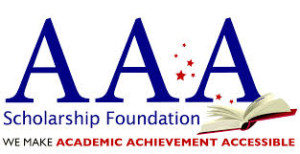Recent newspaper articles have claimed that the growth of Arizona’s successful and effective Low-Income Corporate Tax Credit Scholarship Program is unsustainable at its current growth rate. Below we discuss the four main claims and provide the facts that prove that they are unfounded.
Claim #1) Unless capped, the allowable credits will exceed the amount of taxes owed by corporations.
Fact: The credits are approved by the Arizona Department of Revenue based on the taxes owed by corporations. The approved credits can only be taken against the amount of taxes actually owed subsequently, they can never exceed the amount of taxes owed by corporations.
Claim #2) Income taxes are the only corporate tax against which the credits may be applied.
Fact: The credits may also be taken against insurance premium taxes. The Joint Legislative Budget Committee estimates over $504 million in insurance premium taxes were collected into the General Fund during 2017.
Claim #3) Credits will “swallow up” all of the eligible corporate taxes in the year 2027 unless the 20 percent annual increase is capped.
Fact: Even if one assumes no increase in the amount of tax liability due to economic growth, the maximum credits that can be approved for the year 2027 will represent less than 44 percent of all eligible corporate taxes (income and insurance premium taxes). The credits approved for the current fiscal year represent less than 9 percent of eligible corporate taxes.
Claim #4) Corporations may have reached the limit (“natural water level”) of what they’re willing to take in credits.
Fact: All of the available credits were taken within 6 months of becoming available – half the time allotted for the process. There are many reasons that corporations may not participate immediately once credits become available, including:
- Given the option, many corporations choose to strategically time their remittances to correspond with their normally required estimated tax payments. Corporations must remit their funds to a Student Tuition Organization within 20-days of having their application approved. Now that sufficient credits are available after the opening day of the cap, corporations will naturally take advantage of this timing opportunity and apply for credits when it best matches their cash flow needs.
- The due diligence process for large corporations is lengthy, multi-layered, and crosses many departments (tax, public affairs, government affairs, foundations, community engagement, etc.) subsequently, it takes time for corporations to participate the first time.
The unwavering support of the Arizona Low-Income Corporate Tax Credit Scholarship Program from corporations proves that there is great demand from the business community for these credits. They see the Program as a viable solution for providing real educational opportunities to an underserved population who will one day lead their companies, work in their stores and factories and be consumers of the goods and services they provide.
The Program was designed to save taxpayer dollars by limiting the maximum cost of educating a student benefiting from it to an amount less than the cost of educating that same student in a public school. Instead of limiting the growth of a Program that saves taxpayers money, we encourage Arizona legislators to grow it at an even faster rate by adding additional types of taxes to the eligibility pool.






